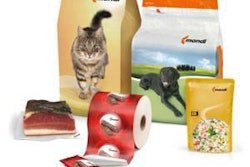Thanks to the baby-boomer generation's love of their pets, American spending on pet products is expected to exceed US$52 billion in 2012, but a recent article looks into whether these pet owners will still be able to care for themselves and their pets as both age.
According to the article, pet ownership rates tend to drop as people age, and baby boomers, defined as those born from 1946-1964, are starting to reach the age of retirement. An industry survey found that routine veterinary care could cost about US$248 per year for a dog, which may mean these baby boomers could be forced to give up their pets on fixed incomes and in smaller homes, or due to physical limitations that prevent them from being able to care for their pet.
However, with most children gone from the home, baby boomers still spend a significant amount on their pets and treat them like humans. The Nielsen Co. reported that baby-boomer households spent an average of US$211 per year on petfood in 2010, exceeding spending by any other generation. As a result, the pet industry is promoting the benefits of pet ownership for older people, like through the Human Animal Bond Research Initiative, a nonprofit dedicated to promoting the positive role that animals play in a person's health.
Some researchers warn, though, that the benefits of pet ownership should also be weighed against the negatives of an aging generation of pet owners. Hal Herzog, a professor of psychology at Western Carolina University, said there are so many studies on the "pet effect" with conflicting results that it remains an "uncorroborated hypothesis," pointing out that the Centers for Disease Control estimated that almost 87,000 falling injuries each year are related to cats and dogs.















